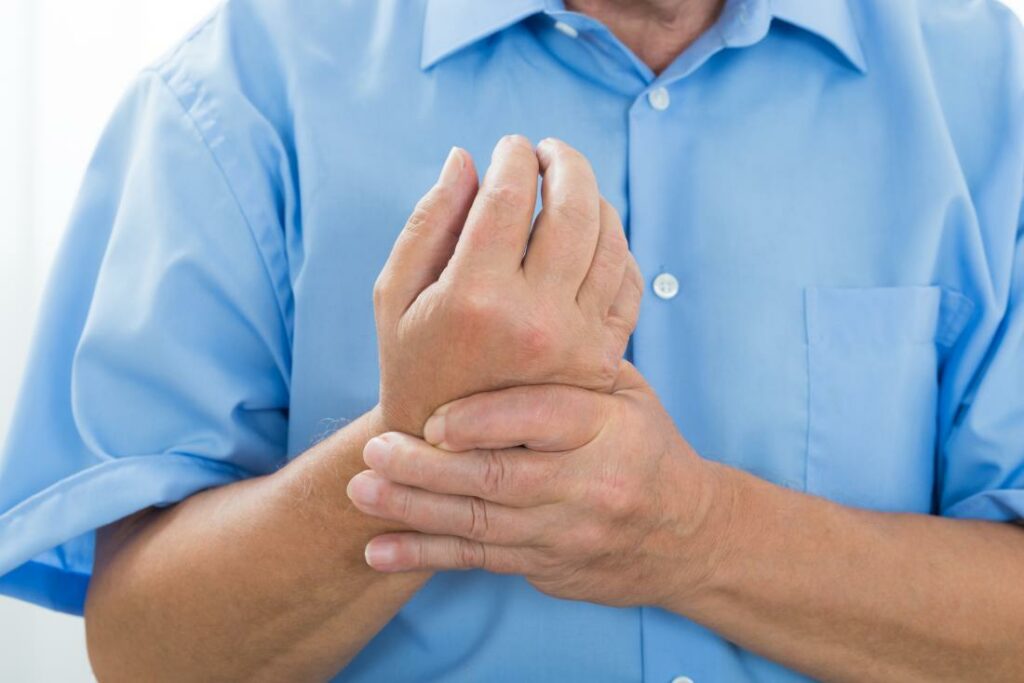The ulnar nerve, often referred to as the “funny bone” nerve, plays a crucial role in the function of our hands and arms. When this nerve becomes compressed or irritated, it can lead to a condition known as ulnar nerve entrapment. This ailment not only causes pain but can also result in numbness or weakness, affecting daily activities. Fortunately, physical therapy offers promising solutions to alleviate symptoms and promote recovery. This article delves into the benefits of choosing physical therapy for ulnar nerve entrapment and the best exercises that can help.
Contents
Does Physical Therapy Help Ulnar Nerve Entrapment?
 Absolutely, physical therapy can be highly beneficial for individuals with ulnar nerve entrapment. It focuses on alleviating the symptoms of ulnar nerve entrapment by employing a combination of manual techniques, therapeutic exercises, and education. Manual techniques can help to release any nerve compression and improve its mobility. Therapeutic exercises aim to strengthen the muscles surrounding the nerve.
Absolutely, physical therapy can be highly beneficial for individuals with ulnar nerve entrapment. It focuses on alleviating the symptoms of ulnar nerve entrapment by employing a combination of manual techniques, therapeutic exercises, and education. Manual techniques can help to release any nerve compression and improve its mobility. Therapeutic exercises aim to strengthen the muscles surrounding the nerve.
Additionally, therapists often educate patients on ergonomic adjustments and lifestyle modifications to prevent further irritation or compression of the ulnar nerve. By addressing both the immediate symptoms and underlying causes, physical therapy offers a holistic approach to managing and potentially resolving ulnar nerve entrapment.
How Physical Therapy For Ulnar Nerve Entrapment Is Helpful?
Physical therapy is a comprehensive and non-invasive treatment approach that offers a wide range of benefits for various musculoskeletal and neurological conditions, including ulnar nerve entrapment. Here’s how physical therapy can help:
- Individualized Assessment
Physical therapists begin by conducting a thorough evaluation of the patient’s condition. This includes understanding the onset, duration, intensity, and nature of symptoms, as well as identifying any contributing factors.
- Pain Management
Physical therapists employ various modalities like ultrasound, TENS (Transcutaneous Electrical Nerve Stimulation), and cold or heat therapy to reduce pain and inflammation around the ulnar nerve.
- Postural Education
Poor posture, especially during repetitive tasks or prolonged periods of sitting, can contribute to nerve compression. Therapists provide guidance on maintaining ergonomic postures to prevent further irritation.
- Functional Retraining
For individuals whose daily activities or occupation exacerbate their symptoms, physical therapists offer training to modify or adapt those activities to reduce strain on the ulnar nerve.
- Patient Education
Knowledge is power. Therapists educate patients about the nature of their condition, prevention strategies, and self-management techniques. This can include stretching exercises, the use of supportive devices, or ergonomic modifications at work or home.
- Modalities and Taping
In some cases, specific therapeutic modalities or taping techniques can be used to offer support, reduce pain, or improve the alignment of joints and muscles related to the ulnar nerve’s pathway.
- Home Exercise Programs
To ensure continuity of care and sustained benefits, physical therapists often prescribe home exercise programs tailored to the patient’s needs.
Overall, physical therapy for ulnar nerve entrapment offers a multifaceted approach to treatment. Through a combination of hands-on treatment, exercises, and education, this can help patients return to their normal activities with reduced pain and enhanced function.
What Are Some Techniques Of Physical Therapy For Ulnar Nerve Entrapment?
 Physical therapy utilizes various techniques to address ulnar nerve entrapment. Each technique targets specific aspects of the condition to alleviate symptoms and prevent recurrence. Here are some of the primary techniques used:
Physical therapy utilizes various techniques to address ulnar nerve entrapment. Each technique targets specific aspects of the condition to alleviate symptoms and prevent recurrence. Here are some of the primary techniques used:
Manual Therapy
Manual therapy is a cornerstone of physical therapy, relying on hands-on techniques to address musculoskeletal and neural issues. In the context of ulnar nerve entrapment:
- Soft Tissue Mobilization: This involves specialized massage and manipulation techniques. By addressing tight muscles, fascia, and other soft tissues around the elbow and forearm, therapists can reduce the pressure exerted on the ulnar nerve. It not only alleviates pain but also enhances local blood circulation, promoting healing and tissue flexibility.
- Joint Mobilizations: The elbow and wrist joints are often implicated in ulnar nerve entrapment. Through gentle joint manipulation and movements, physical therapists can optimize joint alignment, improve mobility, and reduce any contributing factors causing nerve compression.
- Neural Mobilizations: Neural tension can exacerbate symptoms of entrapment. Therapists use specific techniques to facilitate the smooth gliding of the ulnar nerve in its anatomical pathway. It’s a delicate balance of stretching and mobilizing the nerve without causing additional irritation.
Therapeutic Exercises
Therapeutic exercises form the backbone of rehabilitating any musculoskeletal condition.
- Strength Training: Weak muscles can fail to provide necessary support to the surrounding structures, contributing to nerve compression. Targeted strength training exercises for the forearm and hand, when prescribed by a therapist, can bolster the musculature and offer better protection and function to the ulnar nerve.
- Stretching: Tight muscles, especially in the forearm, can indirectly lead to ulnar nerve compression. Gradual and controlled stretches can release this tension, offering immediate symptom relief and reducing the risk of recurrence.
- Nerve Gliding Exercises: Specifically designed to encourage the ulnar nerve to move smoothly within its pathway, these exercises can help free the nerve from any entrapments and alleviate symptoms. They need to be done with caution and under guidance to avoid overstretching.
Postural Education
Our daily habits and postures can often be culprits in the development of conditions like ulnar nerve entrapment.
- Ergonomic Adjustments: Adapting one’s workspace, especially for those who spend long hours on computers or engage in repetitive hand movements, can drastically reduce strain. This might involve using ergonomic keyboards, adjusting chair and desk heights, or incorporating regular breaks.
- Postural Training: Simple modifications, like avoiding elbow hyperextension or wrist over-flexion during tasks, can prevent ulnar nerve irritation. A physical therapist often uses visual aids, mirrors, or even real-time feedback to train patients to maintain optimal postures.
Modalities
Physical therapists have a range of modalities at their disposal to manage pain and promote healing.
- Electrotherapy: Devices like TENS units send small electrical pulses to the skin, which can interfere with pain signals being sent to the brain and stimulate the release of natural painkillers (endorphins).
- Ultrasound: Therapeutic ultrasound uses sound waves to promote tissue healing and reduce inflammation. The waves can penetrate deep into the tissues, providing warmth and increasing blood flow to the affected area.
- Heat and Cold Therapy: The application of heat helps in relaxing and loosening tissues and stimulating blood flow to the area. Cold therapy, or cryotherapy, helps in reducing inflammation and numbing sore tissues, acting as a local anesthetic.
Pain Management Techniques
Beyond the physical realm, managing a condition like ulnar nerve entrapment requires a holistic approach to pain.
- Breathing exercises can anchor one’s attention and divert it from pain while promoting relaxation. Techniques like diaphragmatic breathing or paced breathing can be beneficial.
- Relaxation techniques, be it progressive muscle relaxation or guided imagery, can help in reducing muscle tension and pain.
- Meditation, especially mindfulness meditation, has gained recognition in pain management. By focusing on the present and being aware of one’s sensations without judgment, patients often report a reduction in perceived pain intensity.
By combining these techniques under the guidance of a trained physical therapist, patients with ulnar nerve entrapment have a comprehensive toolbox to not only manage their symptoms but also address the root causes of their condition.
What Is The Best Exercise For Ulnar Nerve Entrapment?
 While there’s no single “best” exercise for ulnar nerve entrapment since treatment should be tailored to the individual, nerve gliding (or neural flossing) exercises are commonly recommended to improve nerve mobility and reduce symptoms. Here’s a basic ulnar nerve gliding exercise:
While there’s no single “best” exercise for ulnar nerve entrapment since treatment should be tailored to the individual, nerve gliding (or neural flossing) exercises are commonly recommended to improve nerve mobility and reduce symptoms. Here’s a basic ulnar nerve gliding exercise:
Ulnar Nerve Gliding Exercise: Begin by sitting or standing upright. Extend the affected arm out to the side with the palm facing up and the elbow straight.
- Step 1: Make a fist with your hand.
- Step 2: Bend your wrist so that your fingers point towards the ground.
- Step 3: Open your fist and extend your fingers, as if trying to reach downwards.
- Step 4: Gently bend your elbow while keeping your fingers extended and reaching downward.
- Step 5: Rotate your forearm so that your palm faces behind you, all while keeping the elbow bent and fingers extended.
- Step 6: Elevate your elbow to shoulder height or as high as comfortably possible. You should feel a gentle stretching or pulling sensation – not pain.
- Return: Slowly reverse the steps to return to the starting position.
Notes:
- Perform the exercise slowly and smoothly to ensure the ulnar nerve glides without getting pinched or excessively stretched.
- Typically, you can repeat this exercise 5-10 times. However, always consult with a physical therapist or healthcare provider to ensure the exercise is appropriate for your specific condition.
- If you experience sharp pain, numbness, or tingling that lasts or increases, stop the exercise and seek guidance from a professional.
While nerve gliding exercises can be beneficial, they are just one part of a comprehensive treatment approach. It’s also important to address underlying issues, such as muscle imbalances, inflammation, or postural habits, that may be contributing to the entrapment. Always consult with a physical therapist to determine the best treatment strategy and exercise regimen for your unique situation.
Conclusion
Physical therapy for ulnar nerve entrapment offers a holistic and non-invasive approach to managing this condition. From tapping into a plethora of techniques that range from hands-on manual interventions to therapeutic exercises and lifestyle modifications. By addressing both the immediate symptoms and underlying causes, patients are empowered with the tools and knowledge to navigate their condition.
With consistent effort, guidance from trained professionals, and personalized treatment plans, many individuals can experience significant relief from the distressing symptoms of ulnar nerve entrapment. And regain their optimal functional capacity. Physical Therapy helps patients recover from pain. If you’re experiencing Back, Shoulder, Knee, Neck, Elbow, Hip, or Arthritis pain, a physical therapist at PhysioMantra can help: Book an online physical therapy session.



